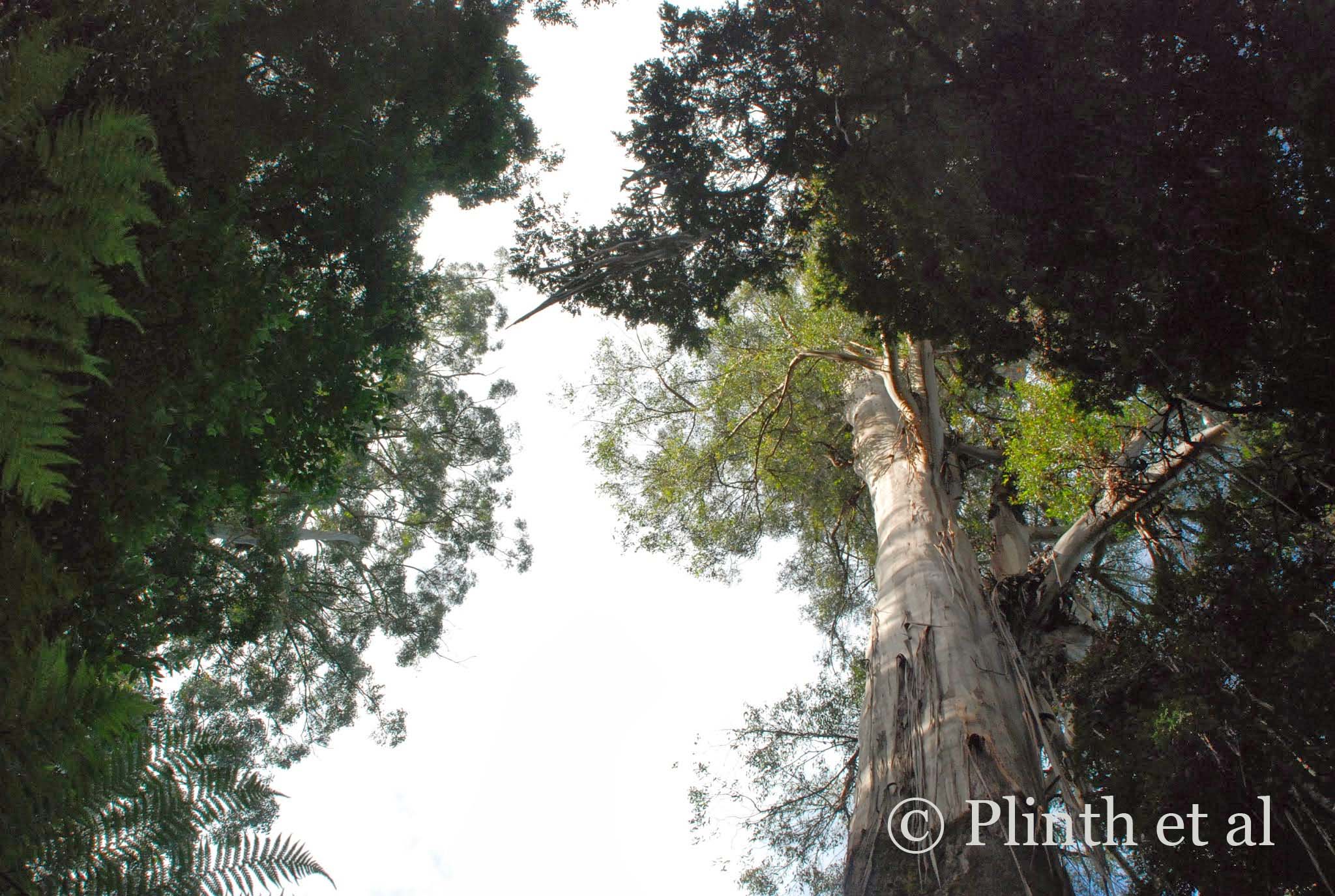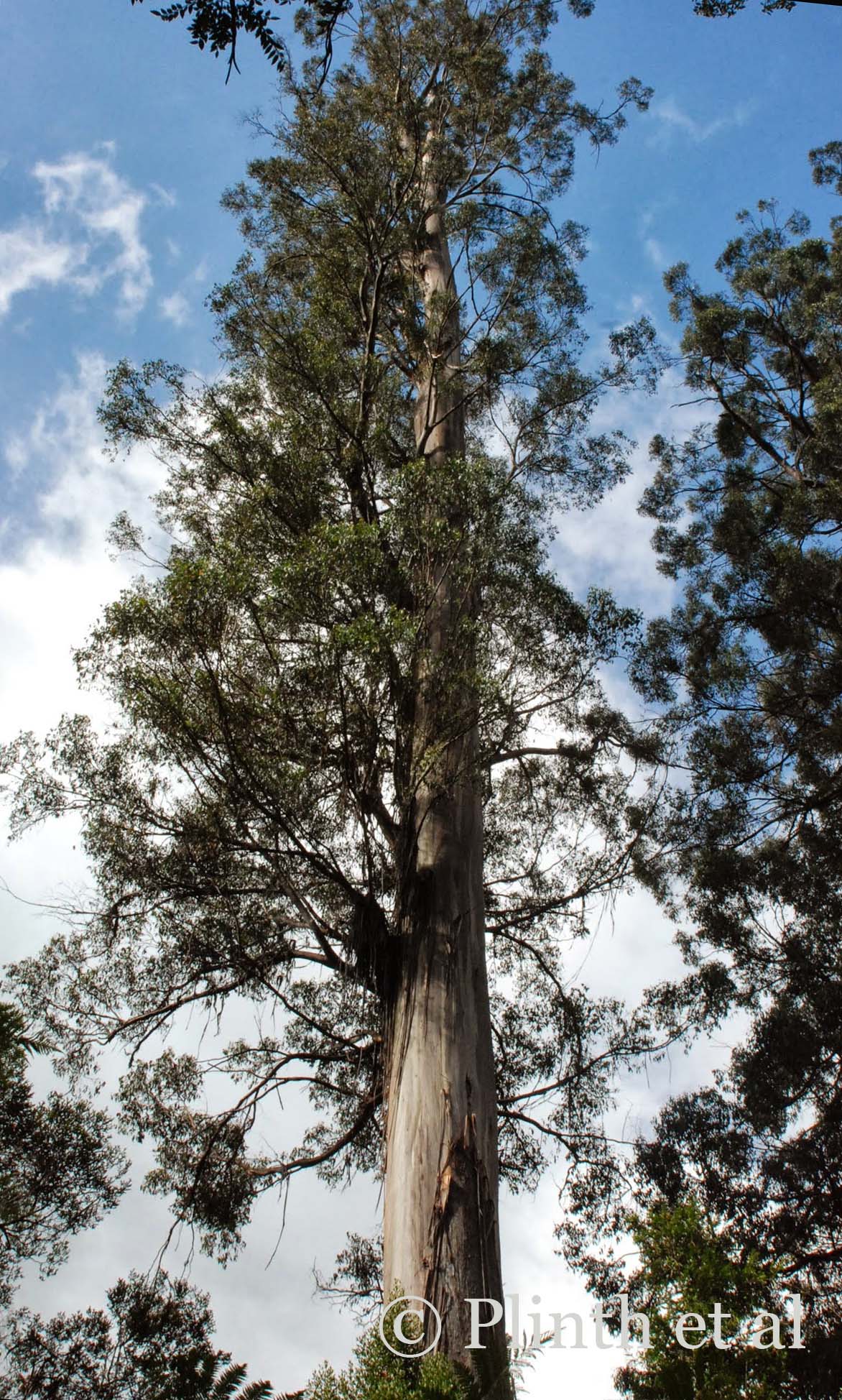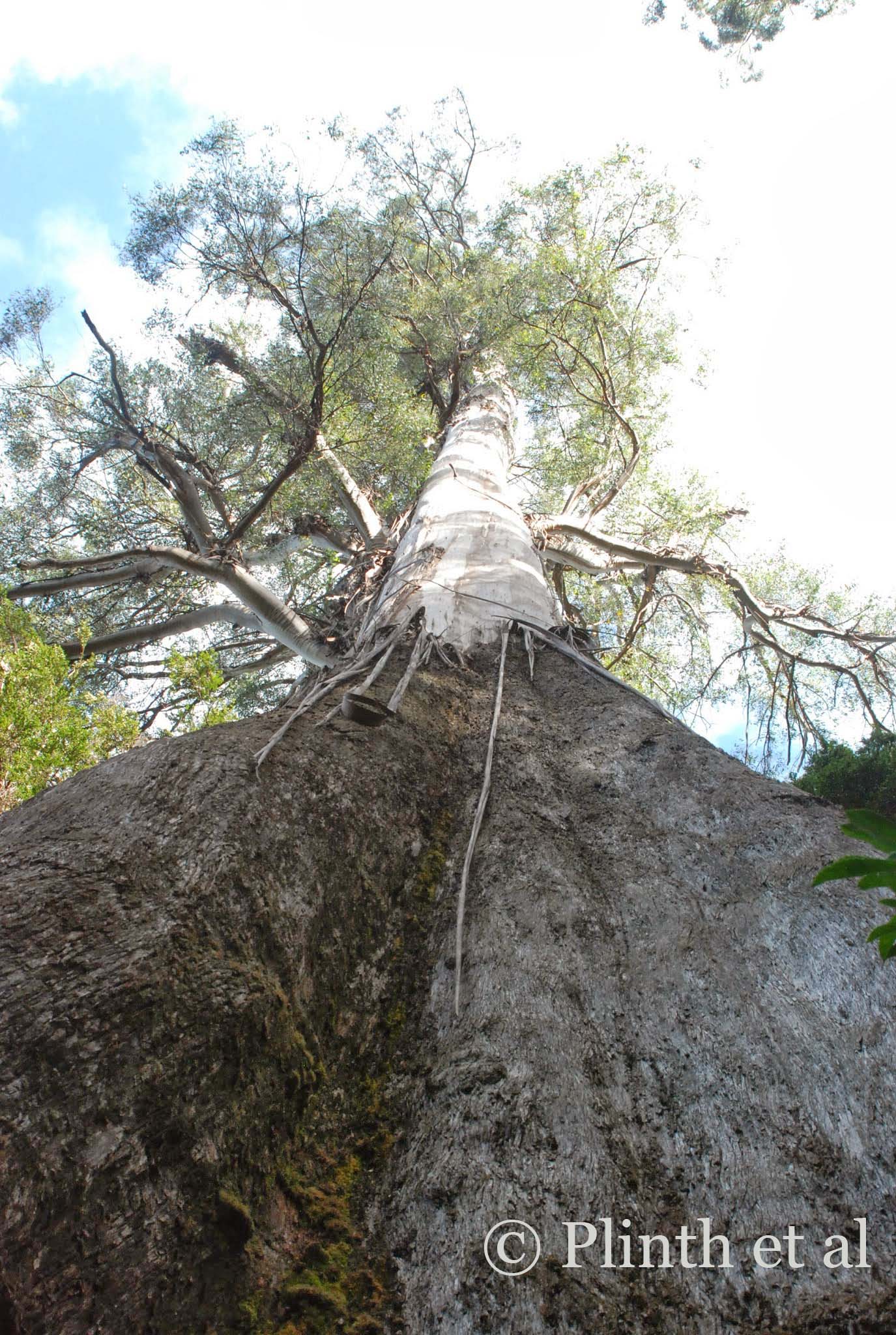Gray Monarchs of Australia
It seems sad that the wanton destruction of giant trees was worldwide in the past - if one counts the coastal redwoods of California, cedar forests of Lebanon, kauri groves of New Zealand, and alerce of Chile. The initial admiration mankind had upon seeing the giants of the tree world did not always translate to sustainable harvest and environmental stewardship, and we are left wondering what centenarians fell by the wayside in the presence of the few survivors. Even Tasmania did not escape the arboreal destruction, and controversy over its logging industry still burns.
The scent of eucalyptus and mimosa always seems Californian before I finally found myself in Australia nearly fifteen years later. Horticulturally I was only familiar with Eucalyptus cinerea, the silver dollar beloved of florists. Despite being pleasingly aromatic, eucalyptus had that incendiary whiff I found suspicious, only to learn that its flammable quality was essential to its regeneration on a fire-prone continent. In the United Kingdom, I encountered the beautiful sinewy trunks of Eucalyptus pauciflora subsp. niphophila (alpine snow gum), its gray mottling rivaled by Platanus occidentalis in North America and Pinus bungeana in China. It fascinated me that New Zealand had no eucalyptus (only introduced species) when the Australian continent was three hours away by flight. Tasmania itself has 29 species, which dominate much of the island's vegetation. The record holder belongs to Eucalyptus regnans, a species too found in isolated patches on the mainland. It has suffered the indignity of being turned into woodchips exported to Japan.
Eucalyptus regnans flourishes in high altitude forests full of Atherosperma moschatum (sassfaras), Nothofagus cunninghammii, Dicksonia antarctica (man ferns), and celery top (Phyllocladus asplenifolius) trees. These forests have high precipitation by Australian standards and such cool moist habitats are a rarity in a desert- to arid-rich continent. Eucalyptus regnans does not reach maturity until they are 20 year-old trees, which makes their large-scale destruction from logging and intentionally lit fires more heart wrenching. If left un-felled or unburnt, the trees can live up to 500 years. This longevity is one of the traits E. regnans shares with other trees in old-grown forests across the world. Like the spotted owl in the old-growth Douglas fir forests of the Pacific Northwest U.S., the mountain ash has its faunal emblem, the endangered Leadbeater's possum (Gymnobedelius leadbeateri), reduced to a few hundred surviving individuals (the 2009 Marysville bushfire wiped out half of the population). This possum prefers forests neither too young nor old - a mixture of mature surviving trees for food and dead ones for shelter and nesting is essential to their long-term survival. A few insectivorous herbivores use E. regnans as its primary food source, and the rare swift parrot inhabits its canopy.
In its genus, Eucalyptus regnans has the unique distinction of being a true pioneer rain forest tree. Although it possesses the ancestral trait of fire-adapted eucalypt epicormic structure, E. regnans instead invests heavily in rapid juvenile to adolescent growth, compromising bark thickness in the process. The resprouting capacity of E. regnans is rather poor compared to other eucalypts. Where other rainforest tree seedlings are able to withstand the low light, E. regnans will die off in natural circumstances. Downed trees become excellent nurse logs for other species in the same way the redwood trees avail themselves for its successors taking advantage of light.
Last year I learned from friends about the discovery of the tallest E. regnans a mere 2.5 miles (4 km) from the popular tourist destination Tahune Airwalk, a hour's drive from Hobart, Tasmania's largest capital city. Knowing that I was to visit Tasmania this past February, we made arrangements for a day's outing. Our drive took us past the apple orchards and farmhouses of the bucolic Huon Valley before the scenery shifted to arid forests. The route was so circuitous that I had to ask for the vehicle to pull aside since I was feeling unexpectedly carsick. It was easy to witness the destructive effects of forestry - the abandoned quarry that once supplied gravel for the roads, the burnt stumps of the clear-cut forests, and the Pinus radiata plantations. Logging has always been a divisive issue in Tasmania, with only a small minority supporting the industry. Gunns, the major logging juggernaut in Tasmania, recently was wrecked with bankruptcy and mismanagement, forcing it to scale down and eliminate forestry plantations. The logging roads, riddled with pot holes and creeping vegetation, indicated the beginning signs of neglect. Our 4 x 4 vehicle plowed down several shrubs in the midst of the road. There were no designated sign posts nor were any trails carving through the forest towards the trees. Altogether it was a 20-minute hike uphill through the tangled undergrowth before we were able to see the trees. Tallest and oldest trees are often found in valleys and gullies, which affords protection against logging and fire and abundant consistent moisture. It is this reason that the record holders Centurion and Triarius, sheltered by winds, fed by moisture trickling down the gully, and relatively inaccessible save by foot, escaped unscathed. The area already had a precarious history with wildfires in 1966 and 1967, which devastated forests and human habitations alike.
[wpvideo kSJcica6]
What led to the discovery of the trees only in 2008 was through an airborne laser scanner (LiDAR), which produces digital imagery in surveying. Within the imagery were two tall trees whose heights had reflected off the laser signals, piquing the forestry surveyors to visit and pinpoint their specific locations. They were incredulous at the trees' stature, noting that Centurion, currently 327 ft (99.5 meters) was once higher, evidently regenerated a new crown at the broken top. Nearby was a close second Triarius at 283 ft (86.5 meters).











